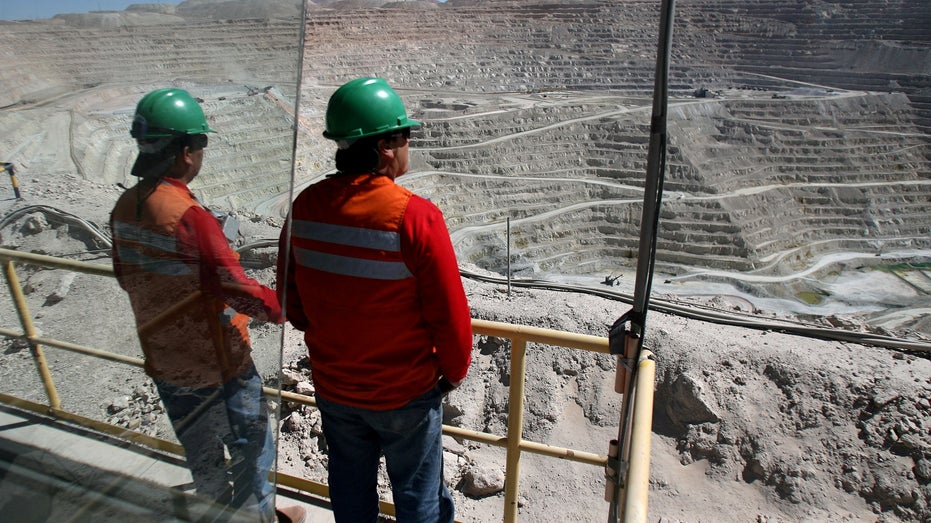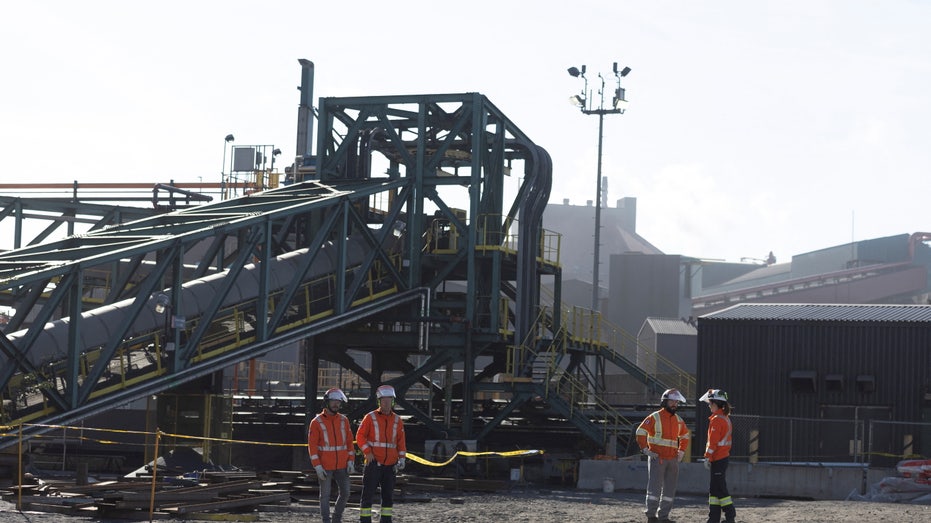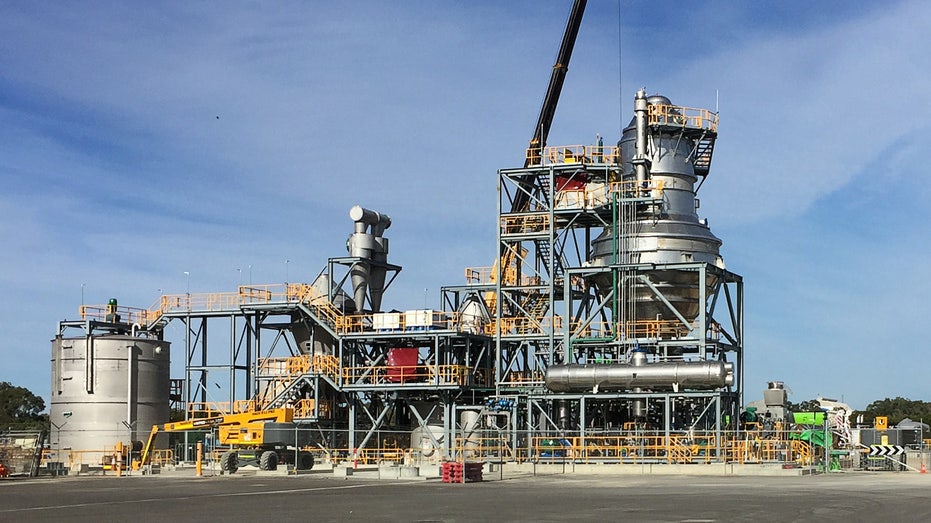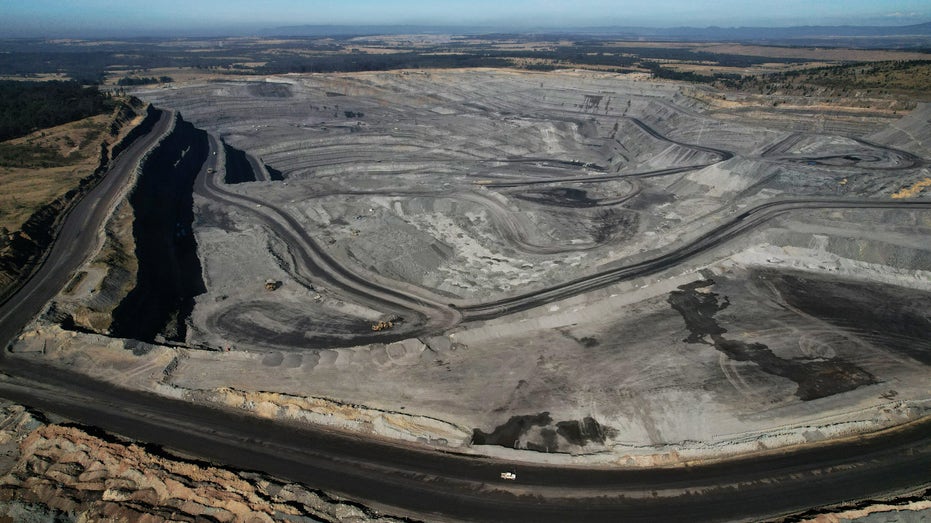Global miners gear up for energy transition with deals and investments
Executives expect the Inflation Reduction Act to increase demand for metals including copper
GoldMining Inc CEO: Gold poised to take off
Alastair Still explains how inflation is impacting the gold market on 'The Claman Countdown.'
Global miners are spending billions of dollars on deals and raising budgets for new projects in a bet on the energy transition, changing course from a decade-long focus on shareholder payouts.
BHP Group Ltd., the world’s biggest miner by market value, is close to completing its biggest acquisition since 2011 with copper-and-gold miner OZ Minerals Ltd. recommending its shareholders vote in favor of the more-than $6 billion bid. Two months ago, Rio Tinto PLC bought out minority shareholders in Canada-listed Turquoise Hill Resources in a $3.1 billion deal to get more exposure to a giant copper deposit in Mongolia.
Miners are also holding more cash on their balance sheet for projects, marking a shift from previous years when they sought to bump up their dividends or buy back stock. Last week, Rio Tinto said it wants to double its annual copper output by the end of the decade.
"I certainly think we are fully aligned with that view that the world needs more materials, and we’re upping our game against that, and at the right time," Peter Cunningham, Rio Tinto’s chief financial officer, said.
EVS NEED NICKEL: MINNESOTA METAL COMPANY DIGS FOR THE SOLUTION WITH NEW MINE

Workers at BHP Billiton's Escondida, the world's biggest copper mine, in Antofagasta, northern Chile, on March 31, 2008. (Reuters/Ivan Alvarado / Reuters Photos)
| Ticker | Security | Last | Change | Change % |
|---|---|---|---|---|
| BHP | BHP GROUP LTD. | 65.61 | +1.24 | +1.92% |
By readying deals and investments once more, global miners appear to be diverging from Big Oil. Exxon Mobil Corp. and Chevron Corp. have significantly cut spending from prepandemic levels and pursued modest growth in their oil-and-gas businesses, amid an uncertain long-term demand outlook for traditional fuels.
The pivot partly reflects expectations within the mining industry that existing operations aren’t producing enough copper, nickel and other commodities vital to the energy transition, including a rapid take-up of electric vehicles. It also highlights that big miners are too reliant on industrial commodities such as iron ore and coal, which are highly profitable but won’t experience the same increase in demand as the world decarbonizes.
The mining industry needs to consistently finance and build new copper projects at a rate that was only achieved for a few years at the end of the China-led commodities boom if the world is to meet a goal of limiting the rise in temperatures to close to 1.5 degrees Celsius, commodities consulting firm Wood Mackenzie said in an October report. It estimated that more than $23 billion of annual investment is needed over the next 30 years, which is 64% higher than the average annual spent during the past three decades.
CHINA BEATING TESLA, US IN AFRICAN LITHIUM RUSH
Mining executives are confident the Inflation Reduction Act, which President Biden signed into law in mid-August, will drive up metals demand. The law offers tax credits and other support for clean-energy projects in the U.S., ranging from wind farms to factories that make batteries and solar components. Electric vehicles and renewable-energy projects use more metals like copper than traditional cars and power plants.
In moving more toward a growth mindset, miners need to avoid a repeat of missteps made a decade ago. As the global economy recovered from the 2007-08 financial crisis and China’s industrialization quickened, miners invested billions of dollars in new mines and embarked on ambitious deals. But the expansions swamped the market with supply, crashing prices. Some investments were written down by billions of dollars and several executives lost their jobs.

The Rio Tinto Fer et Titane plant is seen in Sorel, Canada, Oct. 11, 2022. (Reuters/Christinne Muschi / Reuters Photos)
| Ticker | Security | Last | Change | Change % |
|---|---|---|---|---|
| RTNTF | RIO TINTO LTD. | 105.432 | +5.43 | +5.43% |
Rio Tinto, the world’s second-largest mining company by market capitalization, last week said it would lift annual capital investment to as much as $10 billion in 2024 and 2025, up around 25% on the roughly $8 billion it expects to spend this year. Still, that is down from the investments the miner was making around a decade ago.
Rio Tinto is leading development of a $7.06 billion underground copper mine at the Oyu Tolgoi operation in Mongolia. It is also planning to expand its Kennecott copper operation in Utah and will help develop an iron-ore mine in Guinea that it says could become the world’s biggest mining project.
To help fund that pipeline, Rio Tinto last week decided not to pay a special dividend to shareholders on top of its annual payout even as prices of many of its commodities remain well above historical averages. That was a notable contrast to other years when Rio Tinto used a higher share of its underlying earnings for shareholder returns.
"Miners and investors are cognizant of the widening supply shortfall in several key energy transition-oriented commodities," said Jamie Maddock, an analyst at U.K. wealth-management firm Quilter Cheviot.

View of a new nickel sulphate plant that global miner BHP Group is building to service the battery industry at its Nickel West operations, south of Perth, Australia Aug. 2, 2019. (Reuters/Melanie Burton)
In another illustration of how quickly perceptions have shifted, some mining companies are investing in businesses that they not long before had tried to sell or wrote down the value of by billions of dollars. BHP, which considered a sale of its Nickel West business as recently as 2019, has expanded the Australian operation to produce nickel sulfate, which is used in the lithium-ion batteries that power electric cars.
BHP plans to spend about $7.6 billion on projects and exploration in its fiscal year through June, up from $6.1 billion a year earlier. BHP’s growth ambitions center on producing more copper and nickel, and starting to produce potash, which is mainly used as fertilizer to improve the quality and yield of agricultural production. Last week, the world’s largest miner said it was accelerating a study of a possible expansion of its Jansen potash project in Canada.
Nick Pickens, Wood Mackenzie’s global mining research director, says the mining sector’s current investments don’t go far enough, which could lead to higher commodity prices later if supply falls far short of demand.

Glencore's Mount Owen coal mine is pictured in Ravensworth, Australia, June 21, 2022. (Reuters/Loren Elliott / Reuters Photos)
| Ticker | Security | Last | Change | Change % |
|---|---|---|---|---|
| GLNCY | GLENCORE PLC | 13.43 | +0.46 | +3.55% |
Mining and trading giant Glencore PLC, which led criticism of the industry’s previous investment spree, last week said it would increase spending on production of critical minerals but only when the market needs it.
Miners face other difficulties in bringing on new supply. They include water scarcity, license approvals and winning support in communities that are concerned about the environmental impact of new or expanded mines.
CLICK HERE TO GET THE FOX BUSINESS APP
"Even if something gets found in this year, it’s going to take somewhere between 10 and 20 years to bring that on, depending on which jurisdiction it is," said Mike Henry, BHP’s chief executive.




















